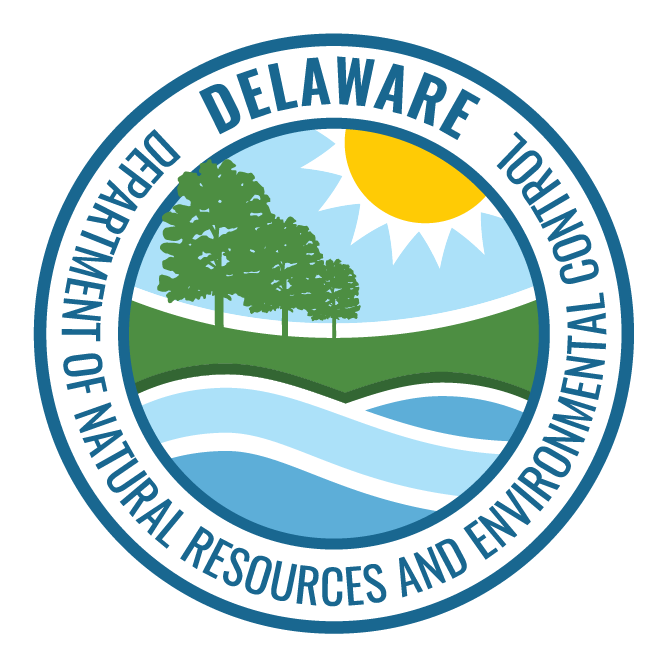Pages Tagged With: "science"
Winter Survival Strategies: A Closer Look at Hibernation in Delaware’s Animal Kingdom
Delaware doesn’t have many “true” hibernators, but it does have its share of critters that use long naps as a winter survival strategy.STEM Women of DNREC
Every year on International Day of Women and Girls in Science, we’re proud to celebrate DNREC’s women scientists, engineers, biologists, directors and others in the fields of science, technology, engineering and math. Learn more about how some of them got started, their advice for girls and what they love about their work.Navigating the Depths: Inside the Delaware Bay’s Longest-Running Water Quality Monitoring Program
The Delaware Estuary Water Quality Monitoring Program, informally known as the boat run, is one of the longest-running water quality monitoring programs in the world.Bands and Special Markers on Migratory Gamebirds
Delaware hunters may find GPS transmitters, bands or other human-created additions on migratory gamebirds they encounter during hunting seasons. Harvesting such gamebirds is legal, but hunters should report what they find to state and federal biologists. Migratory gamebird hunters should be aware of specially marked ducks, geese andEnvironmental Laboratory Quote Requests
The Delaware Environmental Laboratory provides scientifically credible analytical and technical support to DNREC and other state agencies. It can also provide testing for other projects on a contractual basis. Please complete the form below to submit a request for a quote. Lab staff will review the information provided and provide a quoteDNREC Building Delights, Informs Tens of Thousands of Visitors at Delaware State Fair
The annual Delaware State Fair is underway and here’s what you can look forward to at the DNREC Building this year.Breathing Easier – Delaware’s Air Quality Monitoring Network
The first week of May marks the beginning of Air Quality Awareness Week. DNREC ‘s Air Quality Monitoring Stations, located throughout the state, are helping us breathe easier.Earth Day, 2023
As we renew our commitment to our planet this Earth Day, we can be proud of the progress we are making toward reducing emissions by focusing on clean transportation, energy efficiency, clean energy, offsetting carbon emissions and more.The History of the Environmental Laboratory
The Delaware Environmental Laboratory has been helping with the protection of Delaware’s public health and the environment since it came into being in support of the Water Pollution Commission. The Delaware Water Pollution Control Act of 1949 established the Water Pollution Commission “to maintain within its jurisdiction a reasonable quality of water consistentEnvironmental Laboratory Sections
Staff at the Delaware Environmental Laboratory work in specialized sections, providing scientifically credible analytical and technical support to DNREC and other state agencies. Field Services The Field Services Section is responsible for collecting the samples that are analyzed by the various sections in the lab. In addition, they provideTurkeys Trot Into the Lead
A photo of three turkeys trotting down a misty country road took first prize in the 2022 Delaware Watersheds Photos Contest.The Delaware Environmental Laboratory
The Delaware Environmental Laboratory is a full-service lab that tests and assesses water, air, soil, hazardous materials and biological samples. The lab helps facilitate the management of Delaware’s natural resources and the protection of Delaware’s water resources. Since its creation in 1949, the mission of the lab has been to aid inSharks in Delaware Waters
If you’re swimming in Delaware waters, particularly in the ocean, you’re probably swimming near sharks. But they actually have more to fear from us than the other way around.At One With Nature: Delaware’s Nature Preserves
Looking for special summer getaways off the beaten path in Delaware? We highlighted three beautiful state Nature Preserves – one in each county.Planting a Pollinator Garden – Dig In With Our Expert!
We all want to help bees and other pollinators that produce the food we eat. Planting a pollinator garden is a great way to do that. Our DNREC expert has some tips to help you dig in.Attention Shoppers! Bring Your Own Bag Starting July 1
Got your reusable bags? Starting July 1, you’ll need them when you go shopping.Operation Terrapin Rescue – Keeping Turtles Safe
The diamondback terrapins at Port Mahon in Kent County could use a hand during their upcoming nesting season. Learn more about how you can help.Flooding – What You Can Do
Flood Awareness Week is May 20 to May 20, 2024. Are you prepared for flooding?Earth Day 2022 – The Time for Bold Action on Climate Change
For Earth Day, 2022, Gov. John Carney and DNREC Sec. Shawn M. Garvin wrote an article on the need to take bold action on climate change.Tick-Tock – The Ticks are Waiting…
By Dr. Ashley Kennedy Last April, returning home after a day of work outdoors, I loosened my hair out of my ponytail and felt a familiar but unwelcome bump on my scalp. Based on the size and location, I immediately guessed what it could be – an adult American dog tick whichPFAS – Fighting Forever Chemicals in Delaware
By Todd Keyser Beginning in the 1970s, firefighters used a special foam to put out jet fuel fires at Dover Air Force Base (DAFB). That foam figured prominently in 2006, when a C-5 cargo plane crashed just short of a runway after developing problems during takeoff. Fortunately, all 17 onboard survived the crash. ButNourishing Delaware’s Beaches
Our beaches and dunes need protection to prevent erosion especially after severe coastal storms. Learn how DNREC works to provide beach nourishment to Delaware’s shoreline.Coastal Research
DNREC’s Delaware Coastal Programs conducts a variety of coastal research programs to study the affects of climate change, impacts from human pollutants, and other factors impacting the changing coastal environment of Delaware.Contact Us
302-739-6377
Delaware’s Endangered Species: DNREC Keeps Today’s Wildlife from Becoming Tomorrow’s Memory
Delaware’s Endangered Species – there here are 86 animals on Delaware’s endangered species list, including the American kestrel, the northern long-eared bat and the barking tree frog.Delaware’s Endangered Species: What DNREC’s Doing to Help
The red knot, monarch butterfly and Delmarva fox squirrel are among the nearly 100 animals on Delaware’s endangered species list. Learn more about what DNREC is doing to ensure thriving wildlife diversity in Delaware.It’s a Big Year at DNERR
Calling all birders – experienced or not – to help the Delaware National Estuarine Research Reserve have a Big Year!Great Blue Heron Steals the Show
A photo of the iconic great blue heron took first prize in the Watersheds Photos Contest, sponsored by the DNREC Division of Watershed Stewardship.Delaware Recycles!
America Recycles Day, November 15, is a reminder to reduce, reuse and recycle. We have some tips to help you remember how to recycle right in Delaware.What We Do About Animal Strandings in Delaware
An endangered fin whale was spotted struggling in the waters of Cape Henlopen State Park. Both the Delaware Natural Resources Police and the Marine Education, Research & Rehabilitation Institute responded. Learn what happened and how we respond to animal strandings in Delaware.Salt in Our Water — Saltwater Intrusion and Inundation in Delaware
“Ghost forests.” Salty-tasting well water. Saltwater intrusion is a growing issue in Delaware due to sea level rise and climate change. Here’s what DNREC is doing about it.Nature’s Beauty – the Tony Florio Woodland Beach Wildlife Area
Photo Contest Winners! See nature’s beauty at DNREC’s Aquatic Resources Education Center near Smyrna.The Nitty-Gritty of the Estuary
As we mark National Estuaries Week on September 18, learn more about estuaries of Delaware – unique ecosystems that many people, plants and animals call home.Our Not So Secretive Marsh Birds
DNREC scientists are unlocking some of the mysteries of Delaware’s secretive marsh birds. Clapper rails, saltmarsh sparrows and other species are facing many challenges. How are they faring?Snakes to Watch Out For
There are 19 species of snakes slithering around Delaware. Which ones should you watch out for and what are the best ways to avoid them?How to Prevent Backyard Mosquitos
zzzzz … slap. Sound familiar? The whine of buzzing mosquitoes followed by swats is a tell-tale sign of summer in Delaware. There’s plenty you can do in your backyard to reduce populations of these pests. Our Mosquito Control Section has tips to share, along with the mosquitos to watch out for.Report Atlantic Sturgeon
You can help DNREC research and manage the local population of Atlantic sturgeon, a rare and endangered fish. Simply use our reporting form to let us know of any interactions you have with this fish. Submit a ReportOn the Move – Delmarva Fox Squirrels in Delaware
Delmarva fox squirrels are rare in Delaware. Just because you haven’t seen one of these large, silver-gray, fluffy-tailed squirrels doesn’t mean you won’t – especially if you live in Sussex County. Our Division of Fish and Wildlife just moved 15 more into the area, as part of an ongoing translocation program.Meet the Lemurs (and More!) at The Brandywine Zoo
They have long striped tails, intense eyes and they’re full of antics. Meet the lemurs – and the other animals – at the Brandywine Zoo’s new Madagascar Exhibit.Mother’s Day in Delaware Wetlands
It’s Mother’s Day and American Wetlands Month. We thought we’d combine the two to bring you one article about some of the moms who raise their young in Delaware’s marsh areas – osprey, spring peepers and muskrats.Our Planet, Our Responsibility
Most of us do the best we can to reduce our carbon footprint by recycling more, taking more public transportation, or using less electricity to heat and cool our homes. But what else can we do? Outdoor Delaware asked our experts for a list of the best ways we can help our planet.The Transformers
You may not have heard about them, but there are brownfields all over Delaware. They’re neither pretty nor healthy. That is, until we step in to clean them up and make way for redevelopment.More Than a Drink of WATAR
Safer water for us, less flooding and shad returning to their spawning grounds in the Brandywine River. Our WATAR team is making it happen.Answering the Call 24/7 – Our Emergency Response Team
Our Emergency Response Team is the state’s designated first responder for environmental emergencies. The team is on call 24/7 to respond to emergencies from oil spills to clandestine drug labs, chemical leaks, radiological incidents and many more that may occur.Scientific Collection Permits
The Division of Fish and Wildlife issues permits to collect protected wildlife, finfish, shellfish or their nests or eggs for scientific, education or propagating purposes. Permits are issued for up to one year and may require review and approval from a relevant taxa project leader. [column md=”6″ xclass=”col-xs-12 col-lg-5Microplastics: A Not So Tiny Tale
What happens to plastic after it fulfills its original purpose? Recycling gives many plastic items a second use but vast amounts are discarded and make their way into the environment. Some of this becomes microplastics. DNREC scientists are working on ways to clean them up.Our Weatherization Assistance Program – Helping Families Reduce Energy Costs
DNREC can help even out the potentially high costs of home heating, and make a home more energy efficient, through the Weatherization Assistance Program.Hanging with the Bats
Many of us are scared of bats. But they’re far more beneficial than harmful – and they’re not out to get us.“Not My Trash – But I Picked It Up.”
Coastal Cleanup 2020
For 32 years, volunteers cleared tons of trash from Delaware beaches in single-day events. In 2020, to make the Coastal Cleanup accessible and safe for everyone, the effort transitioned to a month-long campaign. Go Herpin’ — Join the Effort to Catalogue Delaware’s Reptiles and Amphibians
You can help us create the first-ever Delaware Amphibian and Reptile Atlas by submitting photos and locations of Delaware’s reptiles and amphibians, or as we call them, “herps.”Our Own Toliara
Toliara is a radiated tortoise who lives at the Brandywine Zoo. Radiated tortoises are reptiles and considered among the most beautiful in the world. His ancestors emerged on land shortly after dinosaurs became extinct some 65 million years ago.Page: 12 of 2 total pages




